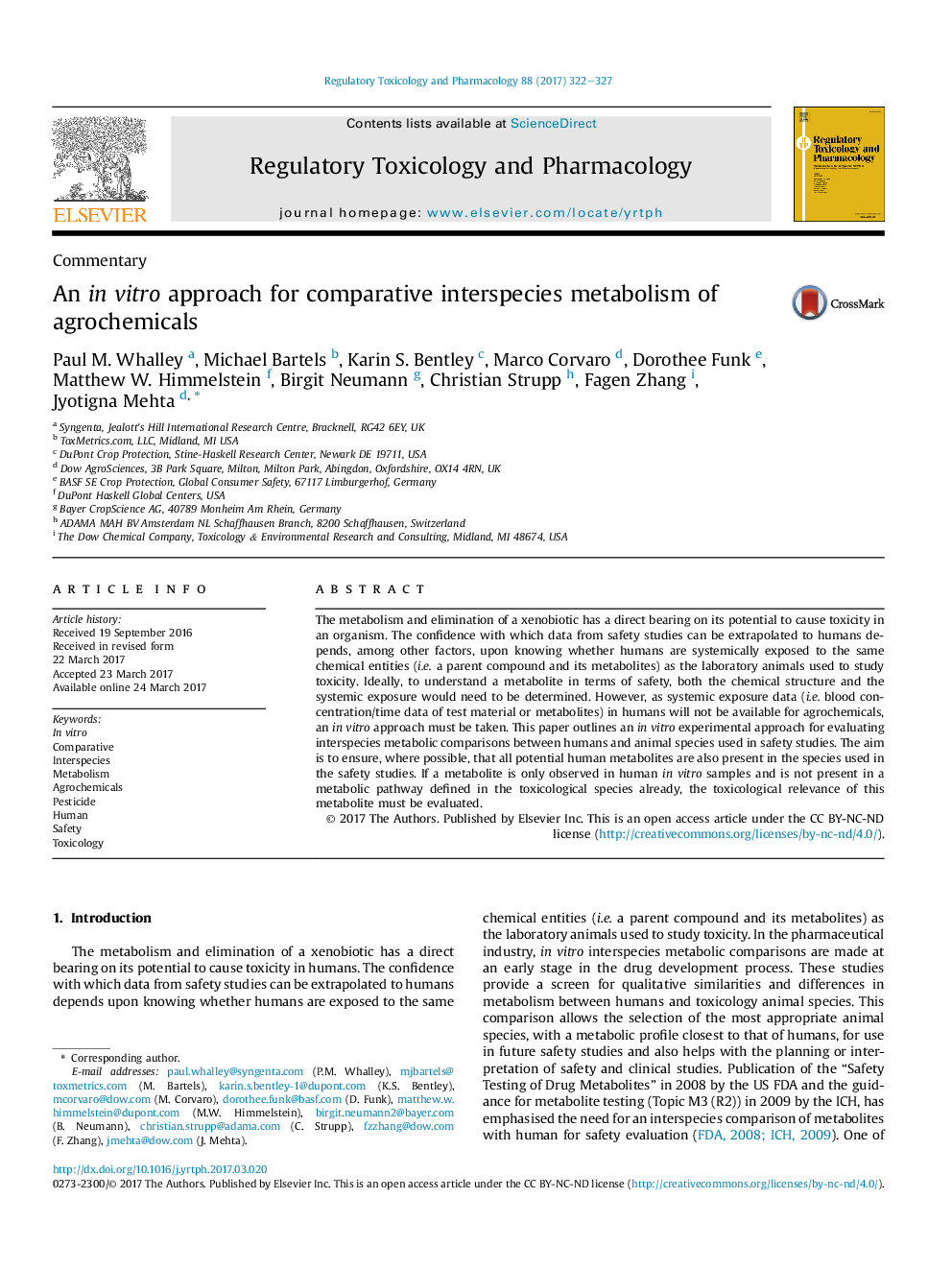| کد مقاله | کد نشریه | سال انتشار | مقاله انگلیسی | نسخه تمام متن |
|---|---|---|---|---|
| 5561167 | 1562115 | 2017 | 6 صفحه PDF | دانلود رایگان |

- Guidance outlining in vitro comparative metabolism approaches for agrochemicals.
- The design allows metabolic comparison between humans and species in safety studies.
- This experimental approach allows identification of human unique metabolites.
- Human unique metabolites may need to be addressed in the regulatory risk assessment.
The metabolism and elimination of a xenobiotic has a direct bearing on its potential to cause toxicity in an organism. The confidence with which data from safety studies can be extrapolated to humans depends, among other factors, upon knowing whether humans are systemically exposed to the same chemical entities (i.e. a parent compound and its metabolites) as the laboratory animals used to study toxicity. Ideally, to understand a metabolite in terms of safety, both the chemical structure and the systemic exposure would need to be determined. However, as systemic exposure data (i.e. blood concentration/time data of test material or metabolites) in humans will not be available for agrochemicals, an in vitro approach must be taken. This paper outlines an in vitro experimental approach for evaluating interspecies metabolic comparisons between humans and animal species used in safety studies. The aim is to ensure, where possible, that all potential human metabolites are also present in the species used in the safety studies. If a metabolite is only observed in human in vitro samples and is not present in a metabolic pathway defined in the toxicological species already, the toxicological relevance of this metabolite must be evaluated.
Journal: Regulatory Toxicology and Pharmacology - Volume 88, August 2017, Pages 322-327